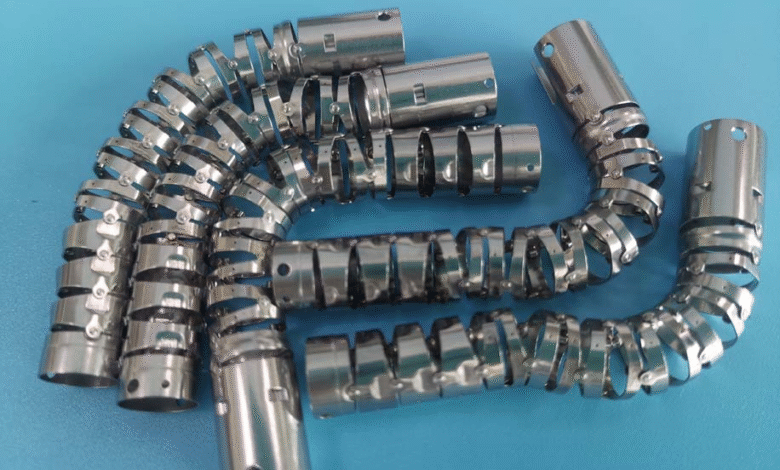Precision Meets Prevention: Tools That Shape Modern Patient Care

The two main priorities that govern modern healthcare are accuracy in treatment and avoidance of harm. Whereas doctors pay attention to proper diagnosis and specific interventions, healthcare facilities also have the same responsibility of controlling the infection and maintaining healthy conditions. To address these two challenges, hospitals and clinics depend on medical device design innovations and patient-care consumables.
From the bending section for endoscope to the humble yet essential disposable bedsheet, every component plays a part in protecting patient well-being. This article examines the way the two tools, one complex and other basic, complement each other in maintaining the gold standards of modern medicine.
Bending Section for Endoscopes: Designed for Navigating the Human Body
Endoscopy is an essential part of minimally invasive diagnostics, which allows doctors to look inside the body without significant interventions. The success of this technique depends heavily on the design and functionality of the bending section for endoscope, a critical segment at the tip of the insertion tube.
In this area, the endoscope can bend and maneuver through the human anatomy, which is highly twisted and sensitive. The bending part makes the navigation more accurate whether it is through the esophagus, colon or the bronchial pathways and causes minimal pain to the patient. This part is made of precision-engineered articulation wires, control knobs and hard sheathing making it mobile and strong.
The safety and the effectiveness of colonoscopies, gastroscopies, and bronchoscopies are directly affected by its performance. The absence of a well functioning bending section might result in an endoscope which might not reach the area of concern or capture quality images thus hindering the diagnostic procedure.
Engineering Flexibility Without Compromising Control:
It is not only about the bending part of the endoscope. It is about accuracy in stress. The error margin in the delicate procedures such as ERCP (endoscopic retrograde cholangiopancreatography) or bronchoscopy in the critically ill patients is extremely narrow. A properly configured bending section will make sure that the scope will move immediately and precisely to the hand of the operator even when it is repositioning at fast rates.
Manufacturers develop their own technology like multi-layer torque control sheaths, asymmetric articulation joints that keep the bending angle consistent in both the up/down and left/right direction. Besides, anti-kinking designs are compulsory to prevent trauma to mucosal lining. This enables clinicians to insert accessories like biopsy forceps or snares to the working channel without compromising flexibility.
Training simulators usually emphasize the need to learn how to control bending sections, since it is not only equipment, but rather an interface that requires skills. It means that an endoscope is not a life-saving diagnostic tool only because of its material but because of its mechanical behavior and its ergonomic design.
Disposable Bedsheets: Frontline Defense Against Hospital-Acquired Infections
Prevention of infection is one of the fundamental pillars of contemporary hospital management. Among the many tools used to combat cross-contamination, disposable bedsheets play a critical yet often underappreciated role. These disposable clothes are made to reduce the transmission of bacteria, viruses and fungi among patients, particularly in high-turnover clinical areas like intensive care units (ICU), operating rooms, emergency rooms, and isolation rooms.
As opposed to conventional cotton or polyester bedsheets, which have to be washed and stored, the disposable sheets provide an on-demand alternative, which removes the risks of inappropriate washing, postponed sanitization, or weakened handling. They are generally produced of non-woven textile material of polypropylene or spunbond-meltblown blend, and are lightweight and tear-proof, as well as fluid resistant.
More advanced models may have antimicrobial coating or breathable but non-permeable layers to make them more comfortable and safe to the patient.
The importance of disposable bedsheets has grown even more pronounced in the post-pandemic healthcare landscape. Strict hygiene practices are now expected to be the standard operating procedures in hospitals.
Furthermore, disposable bedsheets are increasingly being tailored to meet sustainability standards. Manufacturers have also come up with biodegradable or recyclable products, and this has assisted healthcare institutions to match their objectives with eco-friendly intentions without interfering with cleanliness.
The sheets also come in different sizes and colors and this enables the staff to easily know which department or application they are assigned such as surgical department, maternity or pediatrics.
Reusable vs. Disposable: Different Purposes, Same Goal
Both bending sections for endoscopes and disposable bedsheets reflect how modern medicine uses specialized tools to meet distinct yet complementary goals—clinical precision and hygienic safety. Interestingly, they also exemplify a larger discussion in the healthcare sector: reusable and disposable equipment.
The bending section for endoscope is a reusable component, often designed to withstand hundreds of sterilization cycles without losing functionality. It is durable and its construction is elaborate and therefore reuse is necessary since the cost and technical accuracy of manufacturing it are high. Periodical checks, cleaning, and sterilization procedures guarantee their further safety and efficiency.
In contrast, the disposable bedsheet is intentionally designed for single use. It is not to last long but to be hygienic and convenient. Disposables are a convenient substitute in the event of limited time and complete sanitation is not feasible, thus minimizing the chances of cross-infection.
Such a dual-use philosophy is widespread in healthcare settings. Endoscopic tools are reusables that are essential in cases where there is a need to have high performance and a complex handling. Disposables such as bedsheets, gloves and drapes offer quick, cheap and efficient control of infection.
Finally, the two methods are equivalent in that they both aim at safeguarding patient health. The thing is not whether one is better than another, but in having the best tool to perform a specific task. When the two strategies are used tactfully, they generate a medically safe and effective ecosystem.
Conclusion:
From the delicate movement of a bending section for endoscope navigating through a patient’s airway to the quiet protection of a disposable bedsheet under a recovering patient, precision and prevention coexist in every corner of modern healthcare. The two elements, which at face value are seemingly poles apart in terms of functionality and complexity, illustrate the stratified thinking that is synonymous with high quality medical care.
With hospitals still developing around emerging diseases, increased patient populations, and the need to maintain a high level of hygiene, instruments that facilitate accuracy and cleanliness will still be at the center of clinical innovation. Be it in the most advanced engineering or considered disposability, the aim is always the same; to provide safer, smarter, and more caring care.




